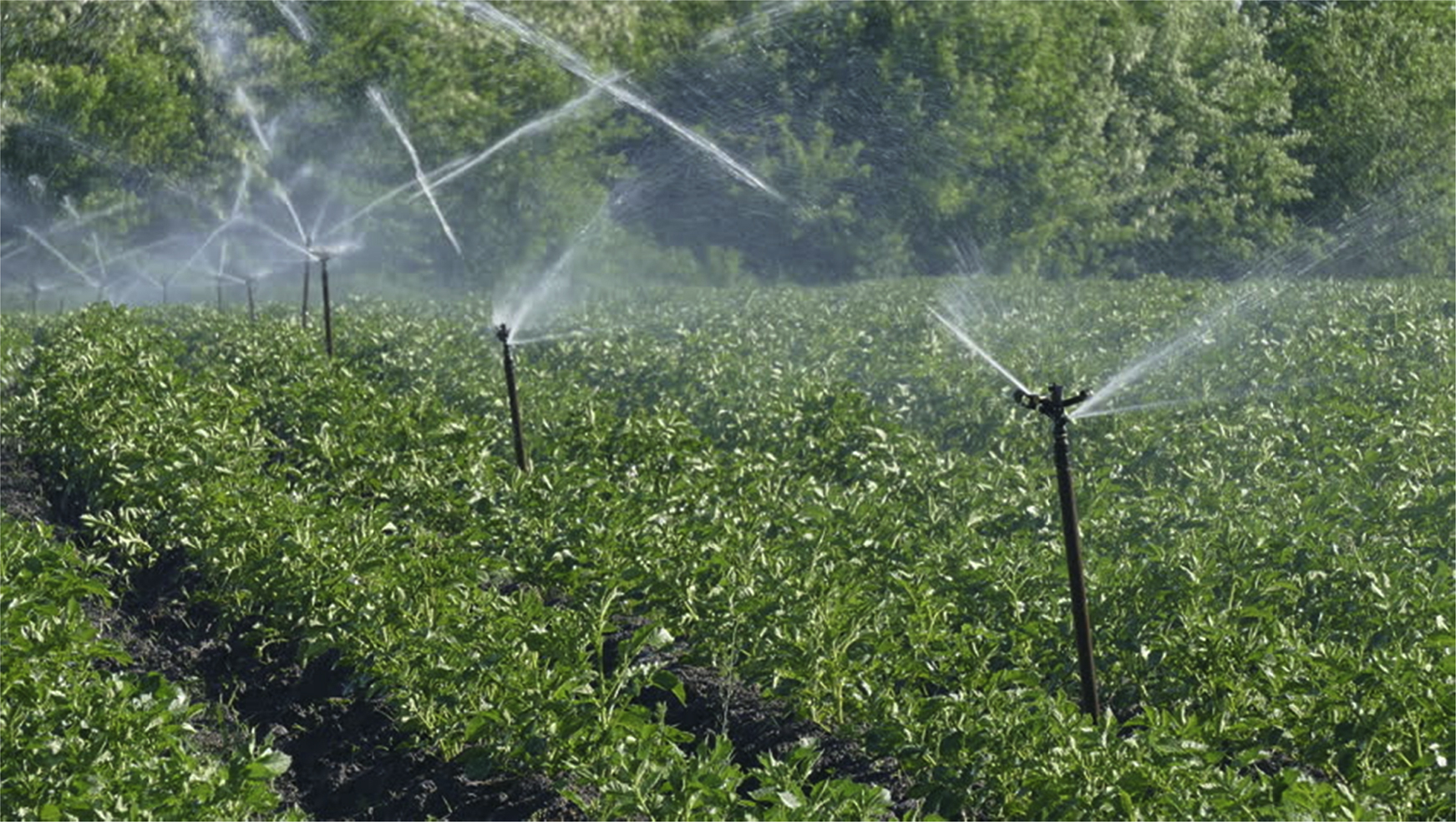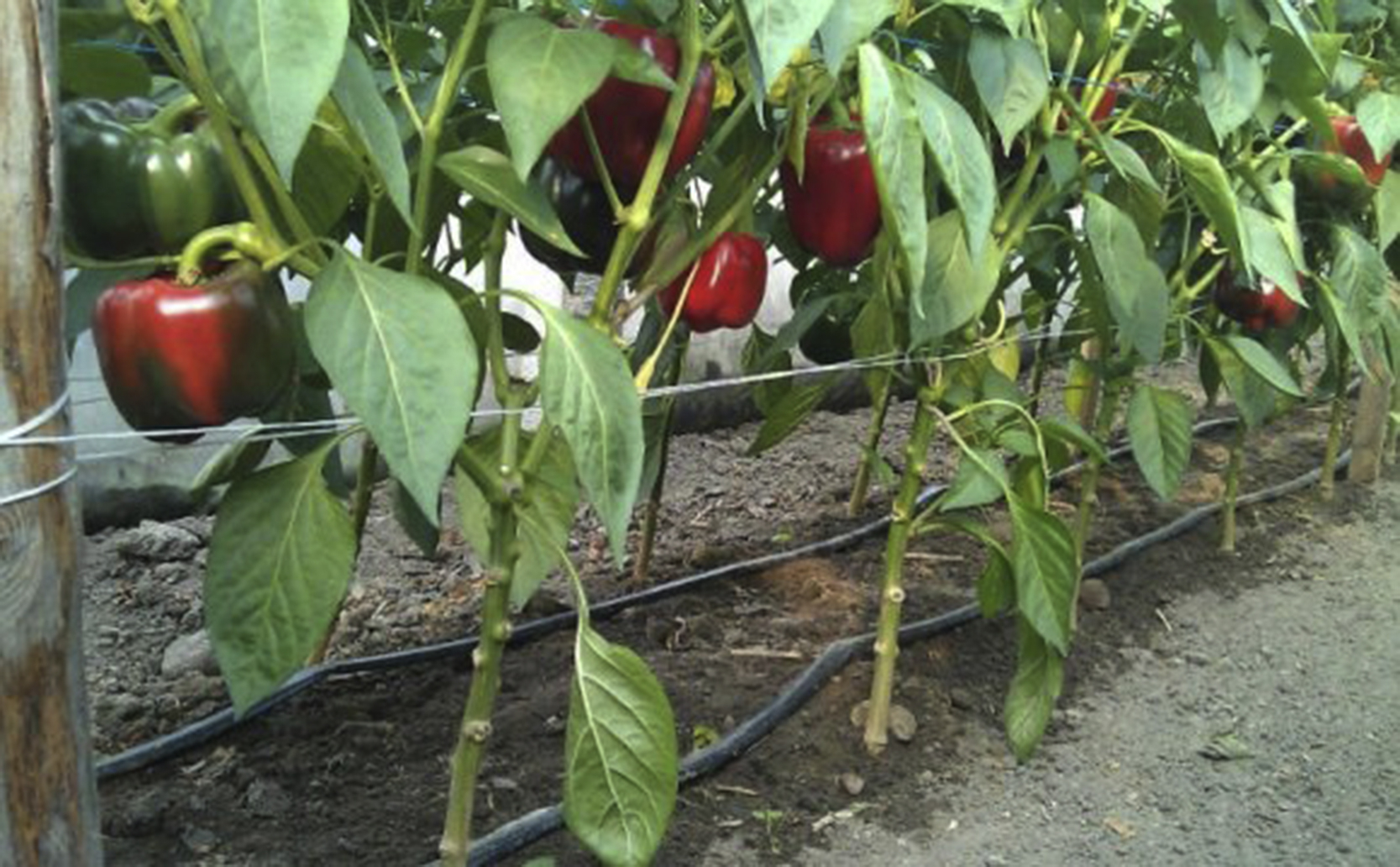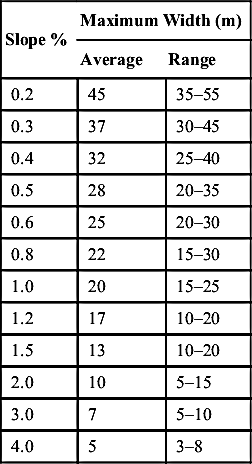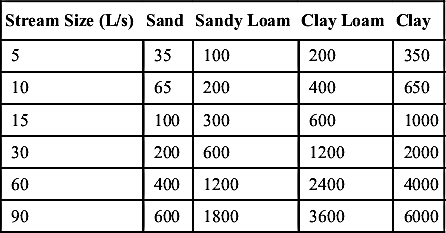Irrigation Methods
Abstract
There are different ways of application of irrigation water to the farm land known as irrigation methods, which ultimately define the magnitude of field losses and thus the field application efficiency. For sustainable planning of the irrigation project especially in terms of water use and water management, irrigation methods play a significant role. The commonly used irrigation methods are surface, sprinkler, and drip irrigation. Each method has its own merits and demerits, depending on the soil, topography, type of crops, climate, water availability and quality, and investment, which are the guiding factors for selecting an adequate irrigation method. All these aspects are suitably considered in the present chapter.
Keywords
10.1. Methods of Irrigation
10.1.1. Basin Irrigation
10.1.2. Furrow Irrigation
10.1.3. Border Irrigation
10.1.4. Sprinkler Irrigation
Table 10.1
Basic Infiltration Rates for Various Soil Types
| Soil Type | Basic Infiltration Rate (mm/h) |
| Sand | <30 |
| Sandy loam | 20–30 |
| Loam | 10–20 |
| Clay loam | 5–10 |
| Clay | 1–5 |
10.1.5. Drip Irrigation
10.2. Factors Affecting the Selection of Irrigation Method
10.3. Layout of Basin Irrigation
Table 10.2
Procedure for Selecting Irrigation Methods Based on the Merits/Demerits of Irrigation Methods
| S. No. | Irrigation Method | Parameters | |||||||
| Crop | Soil | Topography | Climate | Water Availability | Water Quality | Technology | Labor and Cost | ||
| 1 | Basin | Need standing water for crops (more than 24 h), like paddy. Other crops are alfalfa, clover; trees: citrus, banana; crops that are broadcast, such as cereals | Clay > clay loam > loam > sandy loam | Flatter land, uniform slope and terrace | All climate | Sufficient | No issue | Less technology except in case of undulating topography | High labor input |
| 2 | Furrow | Row crops: potato, tomato, fruit trees, maize, sunflower, sugarcane | Clay > clay loam > loam > sandy loam | Uniform topography. Slope <0.75%, slope <0.5% (high rainfall regions) | All climate | Sufficient | No issue | Less technology except in case of undulating topography | High labor input |
| Table Continued | |||||||||

| S. No. | Irrigation Method | Parameters | |||||||
| Crop | Soil | Topography | Climate | Water Availability | Water Quality | Technology | Labor and Cost | ||
| 3 | Border | Pasture, alfalfa | Deep homogeneous with medium infiltration. Loam > clay loam > clay | Uniform topography with slope 0.05%–2% | All climate | Sufficient | No issue | Less technology except in case of undulating topography. Sophisticated instruments are required | High labor input |
| 4 | Sprinkler | Row crops, field and tree crops | Sandy > sandy loam > loam | Any farmable topography: uniform or undulating | Not suitable in high windy area | Scarce | Free from suspended sediment | High and complicated technology | Less labor input but high initial cost |
| 5 | Drip | Row crops, vegetable, fruit crops. Orchard, high-value crops | Sandy to clay (accordingly discharge rate is maintained) | Any farmable topography: uniform or undulating | All climate | Scarce | Free from suspended sediment; saline water can be used; water rich in calcium and iron is not recommended | High and complicated technology. Sophisticated instruments are required | Less labor input but high initial cost |


10.4. Layout for Furrow Irrigation
10.4.1. Furrow Length
10.4.1.1. Slope
10.4.1.2. Stream Size
10.4.1.3. Irrigation Depth
10.4.1.4. Field Length
Table 10.5
Practical Values of Maximum Furrow Lengths (m) Depending on Slope, Soil Type, Stream Size, and Net Irrigation Depth
| Furrow Slope (%) | Maximum Stream Size (L/s) Per Furrow | Clay | Loam | Sand | |||
| Net Irrigation Depth (mm) | |||||||
| 50 | 75 | 50 | 75 | 50 | 75 | ||
| 0.0 | 3.0 | 100 | 150 | 60 | 90 | 30 | 45 |
| 0.1 | 3.0 | 120 | 170 | 90 | 125 | 45 | 60 |
| 0.2 | 2.5 | 130 | 180 | 110 | 150 | 60 | 95 |
| 0.3 | 2.0 | 150 | 200 | 130 | 170 | 75 | 110 |
| 0.5 | 1.2 | 150 | 200 | 130 | 170 | 75 | 110 |

Table 10.6
Suggested Maximum Border Lengths and Widths
| Soil Type | Border Slope (%) | Unit Flow Per Unit Width of Border (L/s/m) | Border Width (m) | Border Length (m) |
| Sand | 0.2–0.4 | 10–15 | 12–30 | 60–90 |
| Infiltration rate >25 mm/h | 0.4–0.6 | 8–10 | 9–12 | 60–90 |
| 0.6–1.0 | 5–8 | 6–9 | 75 | |
| Loam | 0.2–0.4 | 5–7 | 12–30 | 90–250 |
| Infiltration rate of 10–25 mm/h | 0.4–0.6 | 4–6 | 6–12 | 90–180 |
| 0.6–1.0 | 2–4 | 6 | 90 | |
| Clay | 0.2–0.4 | 3–4 | 12–30 | 180–300 |
| Infiltration rate <10 mm/h | 0.4–0.6 | 2–3 | 6–12 | 90–180 |
| 0.6–1.0 | 1–2 | 6 | 90 |








